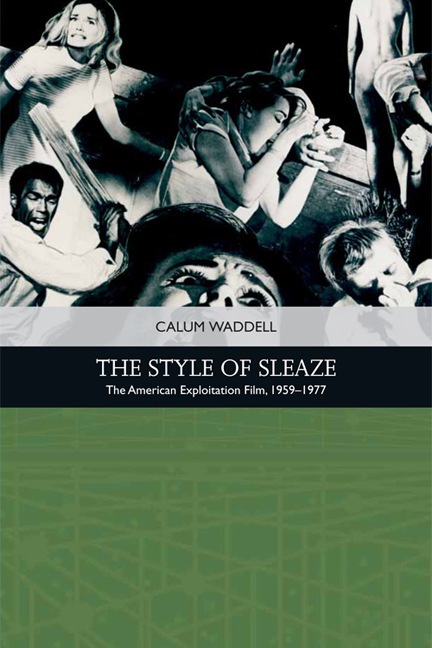Book contents
- Frontmatter
- Contents
- List of Figures
- Acknowledgements
- Introduction
- 1 Not Quite Hollywood
- 2 Emerging from Another Era – Narrative and Style in Modern Exploitation Cinema
- 3 Can We Call It Sexploitation?
- 4 Sex Morality Plays: Character in Adult Cinema
- 5 The Body is Everything: Sexploitation Spectacle
- 6 Exploitation-Horror Cinema
- 7 Cannibalising Tradition: Romero’s Zombies and a Blood Feast
- 8 Slash and Burn: The Exploitation-Horror Film in Transition
- 9 Blaxploitation Cinema: Race and Rebellion
- 10 Sex, Violence and Urban Escape: Blaxploitation Tropes and Tales
- 11 The Blaxploitation Female
- 12 Exploitation as a Movement
- Select Bibliography
- Index
2 - Emerging from Another Era – Narrative and Style in Modern Exploitation Cinema
Published online by Cambridge University Press: 11 November 2020
- Frontmatter
- Contents
- List of Figures
- Acknowledgements
- Introduction
- 1 Not Quite Hollywood
- 2 Emerging from Another Era – Narrative and Style in Modern Exploitation Cinema
- 3 Can We Call It Sexploitation?
- 4 Sex Morality Plays: Character in Adult Cinema
- 5 The Body is Everything: Sexploitation Spectacle
- 6 Exploitation-Horror Cinema
- 7 Cannibalising Tradition: Romero’s Zombies and a Blood Feast
- 8 Slash and Burn: The Exploitation-Horror Film in Transition
- 9 Blaxploitation Cinema: Race and Rebellion
- 10 Sex, Violence and Urban Escape: Blaxploitation Tropes and Tales
- 11 The Blaxploitation Female
- 12 Exploitation as a Movement
- Select Bibliography
- Index
Summary
In this chapter I will discuss the narrative tropes that make exploitation cinema unique during the time period of this book. In doing so, my intention is to discuss the similarities, which have escaped previous discussion of the subject, that exist between the exploitation trend before 1959, in which censorship laws in the United States were dictated by the strict regulation of the Hays Code, and after this period in which the legislation that limited the portrayal of screen sex and violence began to fade. Weiner mentions, ‘The early pioneers of exploitation cinema are really the fathers of the modern independent film. These filmmakers were out to “make a buck,” and most could not have cared less whether their films were technically or artistically good.’ If there is one major difference between exploitation in the classical era and the contemporary period it is that the films begin to show more craftsmanship – something I will further highlight in this chapter. Consequently, exploitation cinema began to be treated a little more seriously by some American critics. It may even be this stylistic element that confuses discussion of exploitation cinema between the pre- and post-censorship periods in America and leads to an assumption that the later films should be classified as an imagined ‘grindhouse’ or trashy ‘paracinematic’ entity: halfway between Hollywood familiarity and grungy low-brow generic grime. As I will discuss, the modern exploitation film actually has a far closer lineage to the classical form than its more accomplished style may indicate.
Much like the classical examples, contemporary exploitation cinema was dependent on its own epoch, rather than revelatory of such – these are films that sell a sense of modern scandal. A classical exploitation text on, for instance, venereal disease was not really a serious and well-meaning investigation into the subject matter. It was instead asking audiences to pay money to see something that may be shocking. In the classical form there is a sense of ‘scandal’, usually reserved for private discourse (that is, teen pregnancy/marijuana use) that was now liberated by the screen. Or, as Weiner mentions, ‘the hallmark of early exploitation films was not necessarily what the films actually showed on screen, but what the audience “might” see if they paid for a ticket.’
- Type
- Chapter
- Information
- The Style of SleazeThe American Exploitation Film, 1959–</I>1977, pp. 32 - 46Publisher: Edinburgh University PressPrint publication year: 2018



